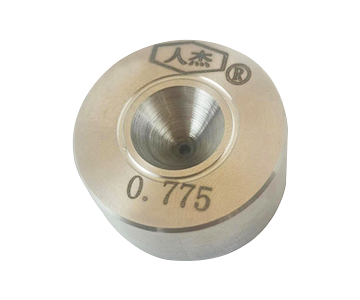The manufacturing process of hard alloy wire drawing molds
Hard alloy wire drawing molds are basically products used in the industrial field, and most of us have not seen or heard of them. It can be said that they are not very common in daily life, but they play an irreplaceable role in the industrial industry. In use, it is important to understand the production process of hard alloy wire drawing molds. Let's take a look together.
The key points to pay attention to in the processing of the blank and mold sleeve of the hard alloy wire drawing mold, as well as the installation of the mold core; The main four steps of manufacturing are: processing of mold blanks, interference in assembly and inlay, processing of drawing die sleeves, and assembly and inlay processes. The core of the hard alloy wire drawing die will shrink during the sintering process. Different batch numbers have different compositions, pressing and sintering processes, and there are also significant differences in shrinkage; Due to the different shrinkage rates of each part of the mold blank, it usually forms a "saddle" or "bell mouth" shape. Although the fluctuation of the external dimensions of the mold blank meets the standards of the mold blank, it far exceeds the interference requirements of the mold group during the installation process, resulting in severe uneven prestressing of the mold core during installation and a significant reduction in the service life of the mold. Therefore, the mold blank needs to be ground externally, which requires the use of special fixtures on the grinding machine and diamond grinding wheel.
In order to obtain a certain degree of core prestress during installation, the diameter of the inner hole of the mold sleeve should be smaller than the outer diameter of the mold core. The difference between the two is called interference. The interference amount should be determined based on the size and deviation of the mold core, drawing stress, and the method of inserting the sleeve. Hard alloy wire drawing molds are embedded with hot pressing and cold pressing methods. The cold pressing method has low interference and low preloading stress. Mainly used for manufacturing wire drawing dies for drawing small-sized soft metals. The inner diameter of the mold sleeve should correspond one-to-one with the outer diameter of the mold blank to ensure the accuracy of interference between each mold; The bottom surface of the inner hole of the mold sleeve must be parallel to the outer end of the mold and ensure that it is perpendicular to the centerline of the mold hole after installing the mold sleeve; The ovality of the inner hole of the mold sleeve should be as small as possible and should not exceed 0.02mm. During hot assembly, the outer surface of the mold sleeve should be polished to ensure uniform cooling after assembly.
The installation process of the hard alloy wire drawing die is to use a press to press the mold blank into the mold sleeve at room temperature. The cold pressing method requires accurate interference between the mold core and the mold sleeve, and high dimensional accuracy. Its advantages are that it does not require heating equipment, saves energy, and reduces costs.







